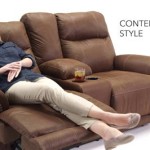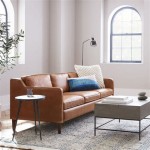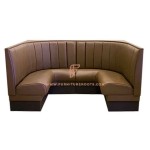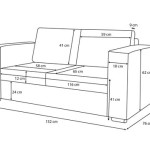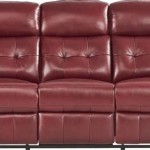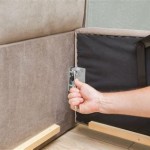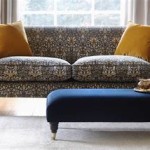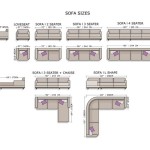Sofa Upholstery in Singapore: A Comprehensive Guide
Sofa upholstery in Singapore is a multifaceted service catering to a diverse range of needs and preferences. From restoring cherished antique pieces to revitalizing well-worn modern furniture, upholstery services provide a cost-effective and sustainable alternative to purchasing new sofas. This article aims to provide a detailed overview of sofa upholstery in Singapore, covering materials, processes, considerations, and the factors influencing pricing.
The decision to reupholster a sofa is often driven by a combination of sentimental value, design preferences, and financial considerations. For many, a sofa represents a significant investment, and the prospect of discarding a perfectly sound frame simply due to worn fabric is unappealing. Upholstery allows individuals to retain the structural integrity of their furniture while updating its appearance to match evolving tastes or interior design schemes.
Understanding the Upholstery Process
The upholstery process is a meticulous undertaking that requires skilled craftsmanship and attention to detail. Typically, the process begins with a comprehensive assessment of the sofa's condition. This evaluation involves inspecting the frame, springs, padding, and existing fabric to identify areas requiring repair or replacement. The professional upholsterer will then discuss fabric options with the client, taking into account factors such as durability, aesthetics, and budget.
Once the fabric is selected, the upholsterer will carefully remove the old fabric, using it as a template for cutting the new material. This ensures a precise fit and minimizes fabric waste. The underlying padding and support structures are then inspected and repaired or replaced as necessary. This may involve replacing worn springs, adding new foam or batting, or reinforcing the frame. The new fabric is then meticulously applied, stretched, and secured to the frame, paying close attention to detail to ensure a smooth, even finish. This process typically involves using specialized tools and techniques to achieve a professional-looking result.
The final stage of the upholstery process involves adding finishing touches such as buttons, welting, or decorative trim. These details can significantly enhance the overall appearance of the sofa and provide a personalized touch. The completed sofa is then carefully inspected to ensure that all work meets the client's expectations.
Choosing the Right Upholstery Fabric
The selection of upholstery fabric is a crucial aspect of the reupholstery process. The fabric not only determines the aesthetic appeal of the sofa but also its durability, comfort, and ease of maintenance. A wide range of fabrics are available, each with its unique properties and characteristics. These can be broadly categorized into natural fibers and synthetic fibers.
Natural fibers, such as cotton, linen, wool, and silk, are derived from plant or animal sources. Cotton is a popular choice due to its affordability, breathability, and versatility. Linen is known for its strength, durability, and natural texture, but it is also prone to wrinkling. Wool is a luxurious and durable option that is resistant to stains and fading. Silk is a delicate and elegant fabric that is best suited for low-traffic areas.
Synthetic fibers, such as polyester, acrylic, and nylon, are manufactured from synthetic materials. Polyester is a durable and stain-resistant fabric that is easy to clean. Acrylic is a soft and lightweight fabric that is resistant to fading and mildew. Nylon is a strong and abrasion-resistant fabric that is often used in high-traffic areas. Microfiber, a type of polyester, is known for its soft texture and stain resistance.
In addition to the fiber type, the weave and construction of the fabric also influence its performance. Tightly woven fabrics are generally more durable and resistant to wear and tear than loosely woven fabrics. Patterned fabrics can add visual interest but may require more careful alignment during the upholstery process. When selecting upholstery fabric, it is important to consider the intended use of the sofa, the lifestyle of the occupants, and the overall aesthetic of the room.
The climate in Singapore also impacts fabric selection. Due to the high humidity, fabrics that are breathable and resistant to mildew are preferred. Synthetic blends with moisture-wicking properties can be particularly suitable for sofas in Singaporean homes.
Factors Influencing Upholstery Costs in Singapore
The cost of sofa upholstery in Singapore varies depending on several factors, including the size and complexity of the sofa, the type of fabric selected, the extent of repair work required, and the reputation and experience of the upholsterer. Generally, larger and more complex sofas, such as sectional sofas or sofas with intricate designs, will cost more to reupholster than smaller, simpler sofas. The cost of the fabric is also a significant factor, with premium fabrics such as leather or silk typically costing more than synthetic fabrics.
The amount of repair work required can also significantly impact the overall cost. If the sofa frame is damaged or the springs need to be replaced, the upholsterer will need to spend additional time and materials on these repairs, which will increase the total cost. Similarly, if the existing padding is worn or compressed, it may need to be replaced, adding to the expense.
The reputation and experience of the upholsterer can also influence pricing. Established upholsterers with a proven track record of quality workmanship may charge more than less experienced upholsterers. However, it is important to choose an upholsterer who is skilled and reliable, as poor workmanship can result in a substandard result and potentially damage the sofa.
Typically, obtaining quotes from multiple upholsterers is recommended to compare pricing and services. It is crucial to provide accurate information about the sofa's condition and the desired fabric to ensure that the quotes are accurate and comprehensive. It is also important to inquire about the upholsterer's warranty policy and their experience with similar projects.
Beyond the core upholstery work, consider transportation costs. Many upholstery services offer pick-up and delivery, but these services may come at an additional charge. These logistics costs can influence the overall cost-effectiveness of the reupholstery project.
Ultimately, sofa upholstery in Singapore offers a viable and often more sustainable alternative to purchasing entirely new furniture. Careful consideration of fabric choice, understanding the scope of necessary repairs, and selecting a reputable upholsterer are essential for achieving a satisfactory and cost-effective outcome.
The growing awareness of environmental sustainability is influencing consumer choices in Singapore, leading more individuals to consider upholstery as a means of extending the lifespan of their existing furniture. This trend supports the conservation of resources and reduces the amount of waste sent to landfills.
In addition to individual homeowners, businesses in Singapore, such as hotels, restaurants, and offices, also utilize sofa upholstery services to maintain and refresh their furniture. This service is particularly valuable for establishments that require a consistent aesthetic and high standards of cleanliness and hygiene.

Singapoer Reupholstery Upholstery Services Sofa

Best Sofa Upholstery Services In Singapore Z Mivins

Sofa Fabric Soft Furnishings Upholstery Cushions In Singapore

Best Upholstery Services In Singapore For Your Furniture Honeycombers

Best Upholstery Services In Singapore For Your Furniture Honeycombers

Ho Soon Lee Sofa Maker Singapore Upholstery Works Re Services

Upholstery Singapore Best Quote For Services

Sofa Fabric Soft Furnishings Upholstery Cushions In Singapore

Where To Buy A Sofa In Singapore Easy Lounge Furniture Ping

Upholstery Services Singapore Leather Sofa Repair

